Five alumni are positively changing their communities, the nation and the world
A trait common to alumni of Colorado Mesa University is a tendency to be driven, innovative and compassionate, and to employ those qualities to make a positive impact in the world.
Almost invariably, alumni reminisce about professors and mentors whose teachings transcended the traditional — encouraging critical thinking and social responsibility. The education they received at CMU quite literally changed their lives.
CMU boasts a proud legacy of difference-makers among its graduates, five of whom are profiled here for the lessons of humanity and benevolence they have applied to their lives and careers since graduation day.
Volunteer to
Humanitarian CEO:
Katie Hilborn, '06
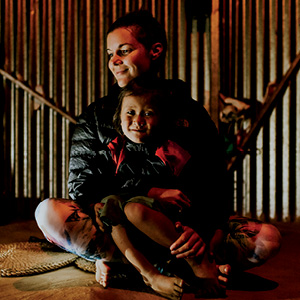
Katie Hilborn, founder of Global Orphan
Prevention, teaches villagers, especially
women, income-generating methods
to help them be able to afford
to keep their children.
JENNA NOELLE PHOTOGRAPHY
Since 2006, Katie Hilborn has traveled to 28 countries. Her love of exploring and serving those in developing countries all started with the CMU Outdoor Program (OP). The program, along with former director Chad Thatcher, transformed the way Hilborn saw her role on planet Earth. The OP allows students to explore remote parts of the globe and Thatcher taught students how to feel comfortable in cultures that were unfamiliar to them.
Hilborn spent six weeks of her senior year in East Africa, where she went on safari, rafted the Nile and saw Kilimanjaro. But she said she was impacted most by the time Thatcher encouraged her to spend on her own, soul searching and self-actualizing, which led her to live with a Maasai tribe and volunteer at schools in Tanzania and Uganda.
“It was so rewarding that I realized I wanted to continue that kind of work,” said Hilborn, who was unable to reconcile the comfort and wealth she knew from life in the United States with the strife she had witnessed in Africa.
In subsequent summers she raised money through donations and volunteered in multiple capacities in other overseas countries, where she saw more of the same. At the same time, she attempted to pursue a full-time career with international nongovernmental organizations such as the United Nations and World Vision International.
“I found that I couldn’t even get past the gatekeeper at those organizations without 10 years of experience or a doctorate. They wouldn’t even talk to me,” she said. “And that was the turning point: I decided to start my own nonprofit.”
A 2011 expedition to India and Nepal, where she volunteered at orphanages, provided an epiphany — Hilborn was stunned to learn (through a UNICEF study) that roughly 85% of children living in orphan homes in developing countries worldwide have at least one living parent.
“Women in patriarchal societies are powerless without a husband, so they can’t afford to keep their children,” she discovered. “So they can try to survive as a family by begging on the streets for the rest of their lives, or they can give their children up to an orphan home and hope they find a better life.”
“That’s what transformed me from Katie the volunteer to Katie the change-maker. A change-maker is simply a person who turns complaining into action,” said Hilborn, who founded her own 501(c)(3) nonprofit, Global Orphan Prevention, in 2011. Their mission statement envisions “a world in which no child is forgotten or separate (from his/ her family) because of economic disadvantage in health, income, or circumstance.”
Hillborn’s method, inspired by CMU Professor Tim Casey, PhD, employs the concept of social enterprise — teaching villagers, especially women, income-generating methods that enable them to become self-sustained so they can afford to keep their children.
“Since 2011, we’ve gone into villages and asked, ‘What do you want? What do you think will help you?’ rather than saying, ‘Here’s what you’re going to do…’” she said. “We’ve found we have much more success if they take ownership in a program.”
Global Orphan Prevention helps villagers form empowerment groups and development committees to transform ideas into income-generating businesses.
“We identify a problem and then help the people find a solution,” she said.
One example comes from a region in Nepal, where girls trek three hours in each direction to attend the nearest school, an impossible situation that inspired a Global Orphan Prevention initiative to build a “girls empowerment center” with a 65-bed dormitory. The center will enable students to live on the premises during the week and return home on weekends.
“We’re currently fundraising for that project with a goal of $85,000, hoping to break ground this fall,” Hilborn said. “It’s challenging and what we really need, in addition to individual donors, is a corporate sponsor or partner.”
Hilborn said her career path has been perpetually rewarding but is never fully satisfying.
“I actually have a little bit of a complex,” she said. “I always seem to wake up in the morning feeling like I’m not doing enough…that I could be doing more."
Fields of green:
Brian Adams, ‘18
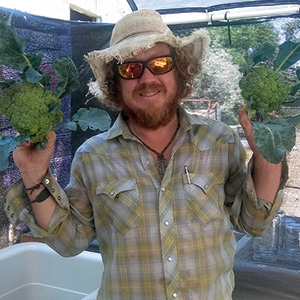
Brian Adams and his wife, Dawn Trujillo,
studied sustainable agriculture
at Western Colorado Community College.
They founded Green Junction Farmstead,
a community-supported agriculture farm.
Brian Adams was 35 in 2011 when he and his wife, Dawn Trujillo, then 37, left Albuquerque and moved to Grand Junction in a vehicle packed mostly with faith.
“Truthfully, I was looking for a way out of my previous career in the automotive industry,” said Adams, who had been working in parts and service management, while Dawn was a server in an Irish bar.
He found employment on the West Slope as a river guide and a ski instructor, while Dawn, a recreational gardener, enrolled for a semester at Western Colorado Community College (WCCC) to study sustainable agriculture. That led to an internship at a local farm that changed their lives.
“She loved it so much that she started this farm of ours, and I’m not too proud to say I’ve kind of been following Dawn’s footsteps ever since. She’s had some great ideas to get this thing going and keep it going,” he said of Green Junction Farmstead in Clifton, six miles from Grand Junction. Considering that neither had any previous farming experience, it was a bold move — so Adams used the autumn months between his two seasonal jobs to enroll at WCCC himself.
“I thought I’d just take a few classes here and there to learn something, but I enjoyed it so much that I stayed for more than two years,” he said. “I learned a bunch about farming and made some very valuable connections in the industry.”
Green Junction Farmstead is one of nearly 13,000 Community Supported Agriculture (CSA) farms in the U.S., a partnership between farmers and consumers in which the responsibilities, risks and rewards of farming are shared.
Their “green” philosophy includes a no-waste policy that includes donating food locally to a food pantry, Catholic Outreach and Solidarity Not Charity, an association that feeds the homeless every Saturday and also delivers meals to military veterans with disabilities. They also work closely with local restaurants.
Green Junction also strives to minimize carbon emissions by limiting the use of trucking and farm machinery.
“We don’t even have a tractor on our farm. We use hand tools to do our work,” said Adams, whose typical day during the summer season starts between 4-5am and ends with “a farmer’s dinner” at 9:30pm.
“We also don’t use harmful chemicals,” he said. “It’s a very labor-intensive practice but the quality of the food we produce, and the fact that the community has fully embraced us, makes it all worthwhile.”
BRIAN ADAMS, GReen JUNCTION FARMSTEAD CO-OWNER
Their original plot of land was nothing more than a big yard with a built-in chicken coop, Adams said. They entered into a crop-share lease program during their third growing season and this year, their fifth in the farming industry, they entered a lease-to-own option on a larger property.
“It’s all been a leap of faith and a financial gamble, no doubt... but we’ve both fallen in love with it. It’s immensely rewarding and there’s nothing in the world I’d rather be doing,” Adams said
Switching on the light bulbs:
Brig Leane, ‘04, ‘08
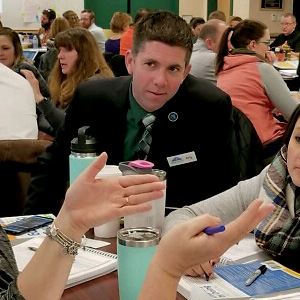
Brig Leane, is a true believer in the tenants of the
Professional Learning Community, an
approach to education that encourages
collaboration among teachers to determine
which teaching methods are more effective than others.
A pervasive philosophy in education throughout the years is that a teacher’s job is to teach and when the task has been completed, the job is complete. Some students will learn, some won’t.
But Brig Leane was struck by a transformational lightning bolt during his postgraduate years at CMU, where he fell in love with a very different outlook.“There’s a real distance between ‘I taught it’ and ‘they learned it.’ Kids have to learn,” said Leane, a true believer in the tenants of Professional Learning Community (PLC), an approach to education that encourages collaboration among teachers to determine which teaching methods are more effective than others in the classroom.
Leane earned his master’s of business administration and a master’s in education leadership amid a career as a teacher and administrator that spanned from 1999-2018. Nowadays, he’s a full-time consultant, sharing PLC tenants with school districts throughout the United States.
“I knew nothing about PLC until I came to CMU, where I was introduced to (guest speaker) Rick Dufour, one of the architects of this process,” he said.
“With PLC, the basic difference is creating a collaborative culture among teachers so kids learn basic skills,” Leane explained. “If there isn’t a place for kids who struggle as they try to navigate through our K-through-12 school system there’s something wrong.”
A pervasive flaw in American education through the years has been a culture of isolation among faculty, Leane said. Veteran teachers often take their vast experience out the door when they retire, while innovative young teachers keep their methods to themselves. There hasn’t been a mechanism built into the education system for educators to share what they know.
The PLC philosophy strives to change that — encouraging teachers to collaborate, share their teaching methods, compare results and give common assessment, “not with the intention of judging each other, but to figure out what’s truly working better,” Leane said.
The method has produced quantifiable improvements in student learning. In fact, as a vice principal Leane installed a PLC program at Fruita Middle School, which was the only school in the 22,000-student district to achieve student growth above the state median in every tested subject, in all grades, and with every demographic subgroup of students measured by the State of Colorado. “Our growth rate also was the highest recorded over the previous three years,” he noted.
PLC also is improving upon a troublesome attrition rate among newer teachers.
“Frankly, a lot of new teachers aren’t sticking with the profession — they’re washing out,” he said. “But we’re finding that if you put them on a highly-effective, collaborative team that’s working together, supporting each other, sharing methods and results with colleagues, we see growth for both the teachers and the students.”
Swinging Hard, Saving Lives:
Kathy Howa, ‘82
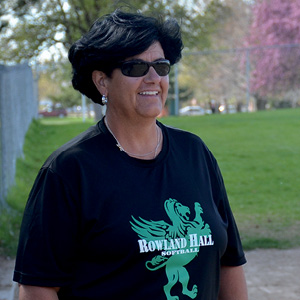
After Kathy Howa's cancer diagnosis,
her students and athletic director
started a softball fundraiser
for cancer research, which has
evolved into Swing for Life,
a foundation that exceeded
$1 million in total fundraising last year.
Seventeen years have past since Kathy Howa was diagnosed with stage-2 invasive carcinoma in her breast, a jolt of reality that flipped her otherwise idyllic world on its head.
The former CMU softball player and physical education major was an educator and coach at Rowland Hall High School in Salt Lake City in 2002 when she endured a lumpectomy, chemotherapy and radiation treatments to eradicate the disease.
But Howa soon began to view her personal struggle as a war she was willing to wage on behalf of all women — nearly 42,000 of whom are expected to die from breast cancer during the current year, according to the American Society of Clinical Oncology.
“My students and athletic director found out about my diagnosis and immediately rallied around me,” she said. “They decided they wanted to do something to help find a cure, so
we started something they called a Hit-a-Thon.”
Softball teams from two other schools jumped aboard for the fundraising event in which each participant hit 100 pitches with the proceeds going toward cancer research.
In three years, as more schools signed on, the event raised $12,000, $24,000 and $78,000, then morphed into a full-blown 24-team tournament.
In 2008, a couple of lawyers reached out, pro bono, and got “Swing for Life” trademarked as a foundation — that’s when things really took off.
“High school football, basketball, baseball and soccer teams started having fundraisers for us,” Howa said. “Then colleges got involved, one of which was CMU, which was really exciting to me as an alumna. And then came the professional teams: the Utah Jazz (NBA basketball), the Utah Grizzlies (professional hockey) and the Salt Lake City Bees (minor-league baseball) all doing fundraisers and sending us money every year.”
All Swing for Life proceeds are donated to the Huntsman Cancer Foundation, chosen because its founder, John Huntsman, vowed to underwrite all expenses, which allows every penny donated to go toward cancer research.
“We operate on an all-volunteer basis, from the kids all the way up, which is why we’re also able to give all of our money to the Huntsman Cancer Foundation. Our only salaried employee is an accountant,” Howa said.
Swing for Life typically raises around $50,000 per year and exceeded the $1 million mark in total fundraising last year.
“I believe Swing for Life is one of the main reasons I’ve been able to stay healthy because now I can focus on something other than my next checkup, which is always frightening. I feel very lucky that my cancer hasn’t come back over the past 17 years, but it’s still scary,” said Howa, who still coaches softball at Rowland Hall, teaches physical education at another Salt Lake City high school and is an associate instructor of kinesiology at the University of Utah.
“My goal is to eradicate this disease,” she said. “I plan to continue this work as long as I’m healthy and able. I’ll do it until I can’t do it anymore.”
A Lifetime of Service:
Theresa Burns-Fair, ‘89
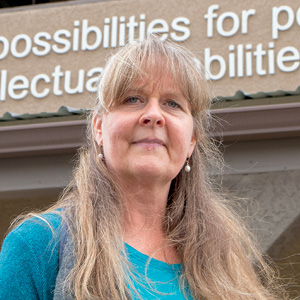
Theresa Burns-Fair has worked at Mosaic,
an organization that provides a life of
possibilities to those with intellectual
disabilities, for 27 years.
Theresa Burns-Fair has dedicated the past 27 years to providing a life of possibilities to those with intellectual disabilities as the executive director of Mosaic, which is based in Grand Junction. But when she learned there are only two behavior analysts who are board-certified to provide behavioral services to children in Mesa County, she decided to take a career detour.
It’s been a great gig, said BurnsFair, whose executive director duties have include managing the budget, fundraising, making human resource decisions and mentoring others, among other things.
“I have absolutely loved the variety of my job,” she said. “But I’ve always dabbled in behavioral support, even as executive director.”
Burns-Fair still holds her executive director position as she makes the transition to board-certified behavior analyst — a process that requires 1,500 hours of closely-supervised clinical work before she can become certified.
“I’m doing that through Mosaic, currently being supervised as I work with adults, and I’m also working with an organization in Montrose called Over the Rainbow to get more experience with children,” she said. “I guess I probably could have gone into a career where I would have made a ton of money, but for me it was always about the mission.”
Burns-Fair was a student at Mesa, looking for a job that would be symbiotic with her field of study, when one of her professors, Karen Ford, PhD, recommended her to Mosaic.
“That’s when I began working with people who had intellectual disabilities, and it’s one of the things I’m most thankful for when I remember my college years,” she said. “I had phenomenal professors at Mesa who really shaped things to my learning style and tailored the program to my needs. In my case, I think that made a significant impact."
Children with intellectual disabilities have largely fallen through the cracks in the system — a situation Burns-Fair said she’ll strive to correct in her new capacity.
“If we can provide behavioral services to children, we’ll impact the quality of life for that person and also the person’s family. And then, hopefully, they won’t need the same level of support as they transition to adulthood,” she said. “I think that’s where we’ve been amiss: People tend to come into our program and we’re dealing with socially-inappropriate behaviors that they haven’t been able to change over the years. I’d really like to address some of those issues earlier.”
Burns-Fair said she hopes to remain with Mosaic as she transitions to her new career, hopefully as the head of the agency’s behavioral department.
From helping those in developing countries and improving education here in the U.S. to sustainability feeding a community to raising thousands of dollars for cancer research — the 41,504 CMU alumni will continue to be change-makers positively impacting the world. •
